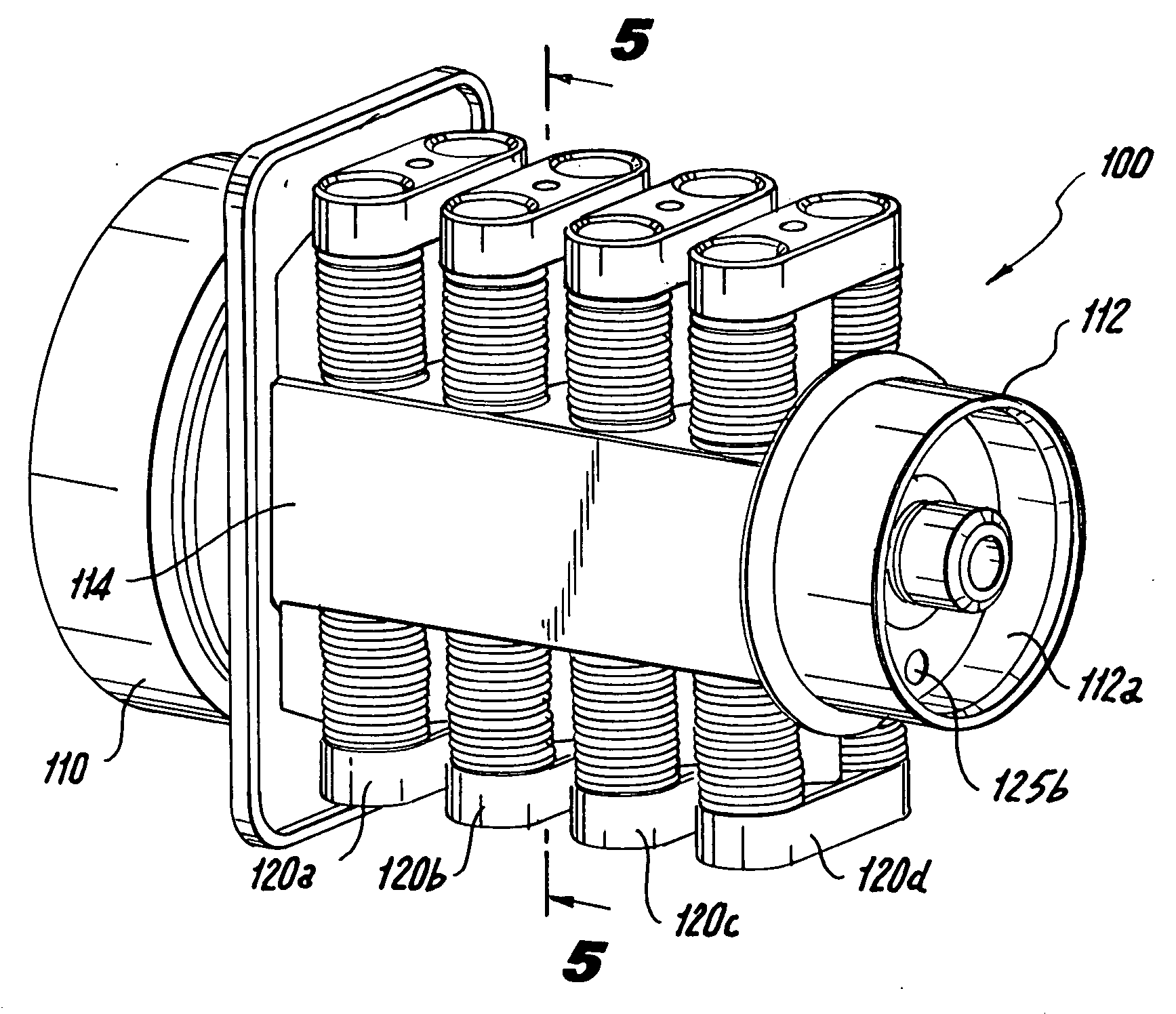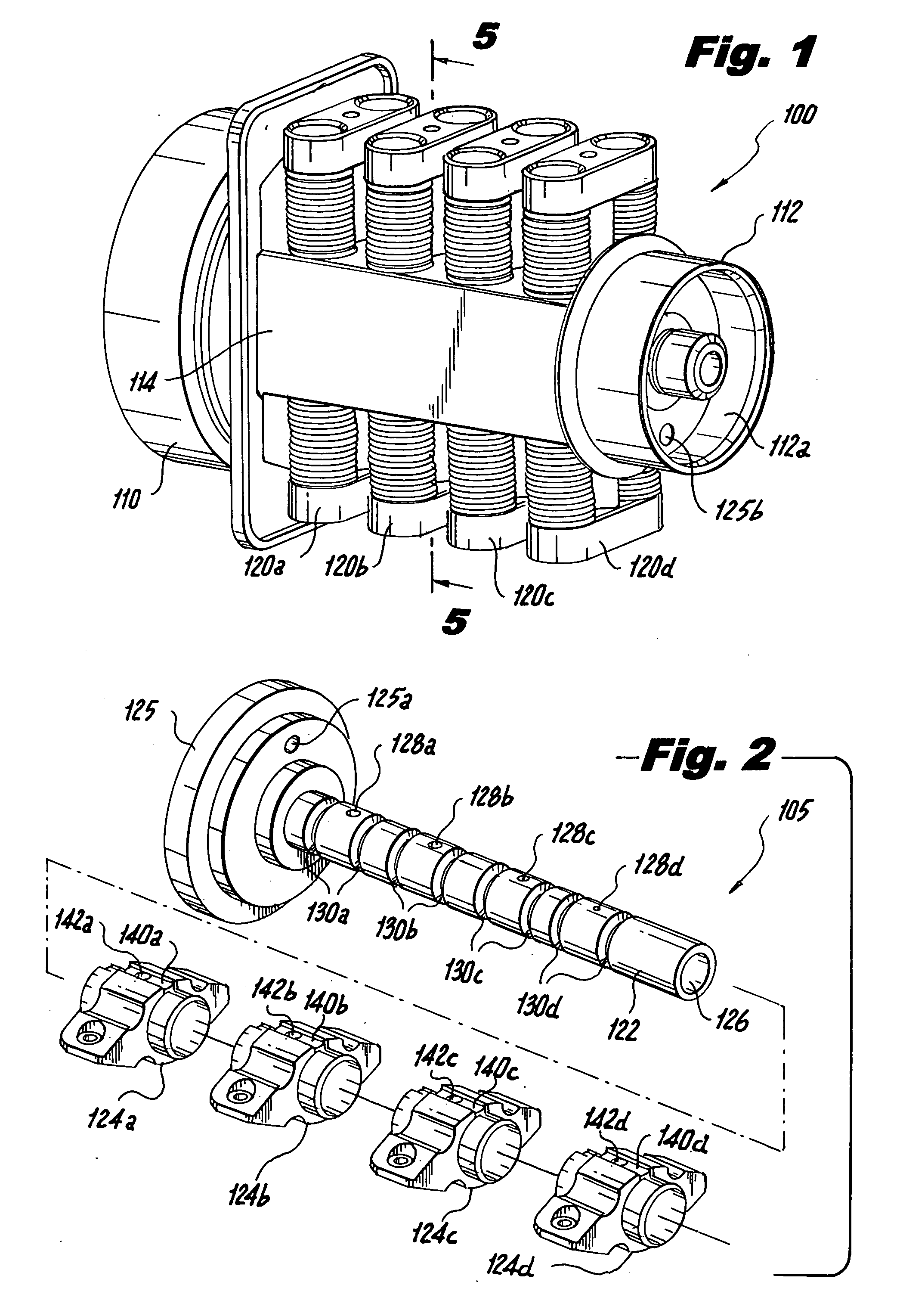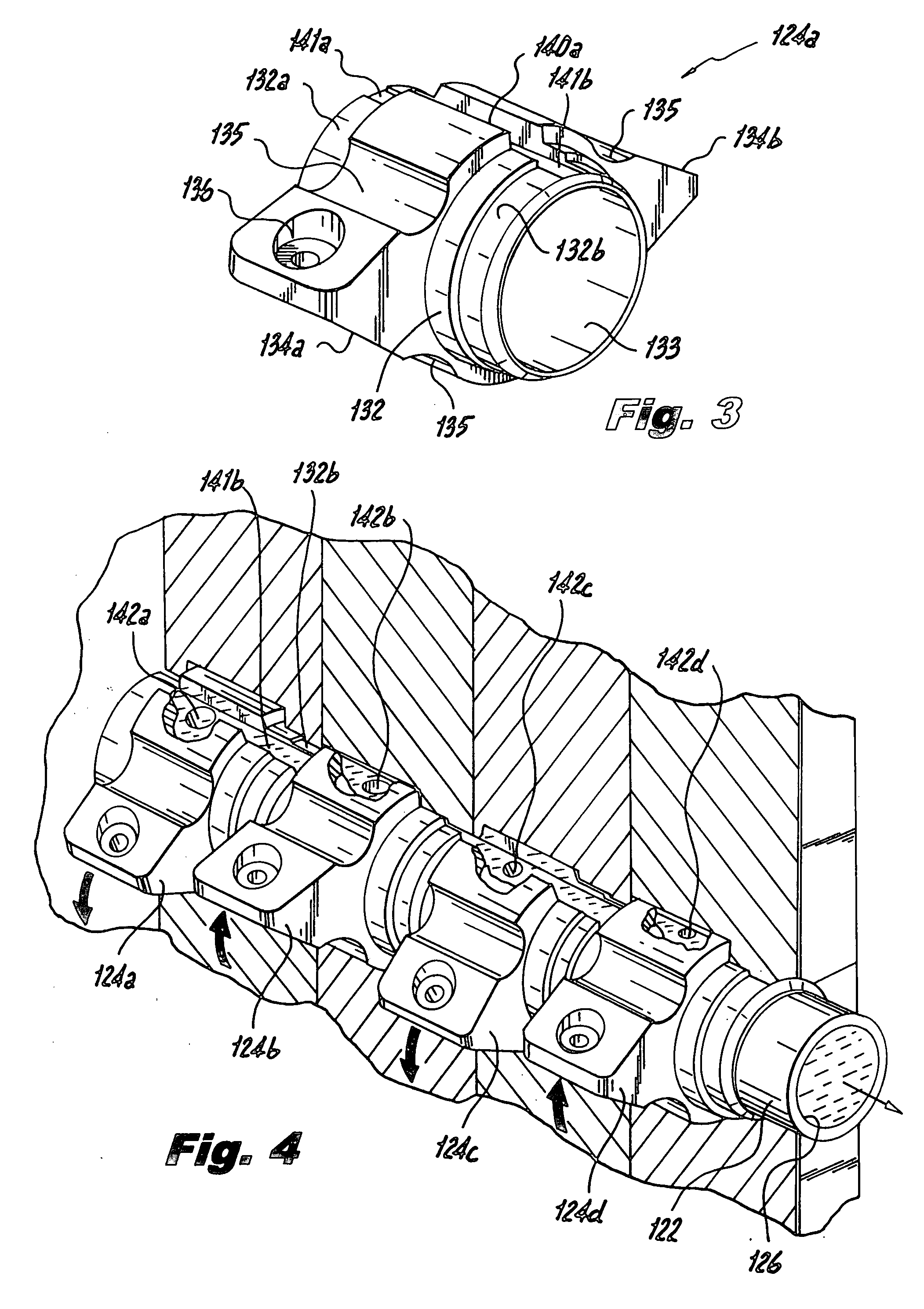Valve assembly for modulating fuel flow to a gas turbine engine
a gas turbine engine and valve assembly technology, applied in the direction of turbine/propulsion fuel valves, machines/engines, lighting and heating apparatus, etc., can solve the problems of reducing the performance of the engine system, amplitude pressure oscillation, and significant problem of combustion instability, so as to reduce frictional surface contact and accelerate the oscillatory movement of the valve rotor
- Summary
- Abstract
- Description
- Claims
- Application Information
AI Technical Summary
Benefits of technology
Problems solved by technology
Method used
Image
Examples
Embodiment Construction
[0060] The latching oscillating valve assemblies disclosed herein are intended for use in conjunction with an active combustion control system. Preferably, the active combustion control system is designed to reduce localized thermo-acoustic combustion instabilities within the combustion chamber of a gas turbine engine. In such instances, the valve assemblies disclosed herein can be employed to pulsate or otherwise modulate fuel flow to individual fuel injectors at extremely high frequencies in excess of about 1000 Hz in proportion to detected combustion instability.
[0061] The active combustion control system is also intended to lower engine emissions, improve engine dynamics and maximize operating efficiency. In such instances, the valve assemblies of the subject invention can be employed to trim or otherwise actively adjust fuel flow to individual injectors to control the temperature pattern factor in a combustor and thereby reduce hot spots and other detected combustion condition...
PUM
 Login to View More
Login to View More Abstract
Description
Claims
Application Information
 Login to View More
Login to View More - R&D
- Intellectual Property
- Life Sciences
- Materials
- Tech Scout
- Unparalleled Data Quality
- Higher Quality Content
- 60% Fewer Hallucinations
Browse by: Latest US Patents, China's latest patents, Technical Efficacy Thesaurus, Application Domain, Technology Topic, Popular Technical Reports.
© 2025 PatSnap. All rights reserved.Legal|Privacy policy|Modern Slavery Act Transparency Statement|Sitemap|About US| Contact US: help@patsnap.com



